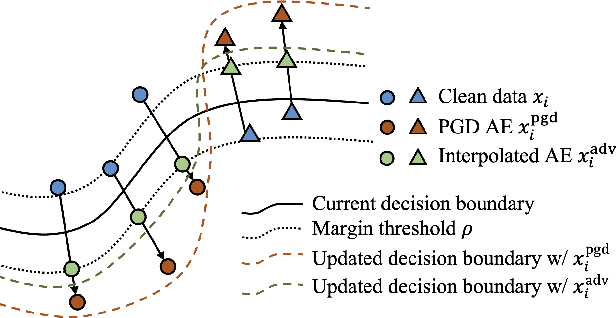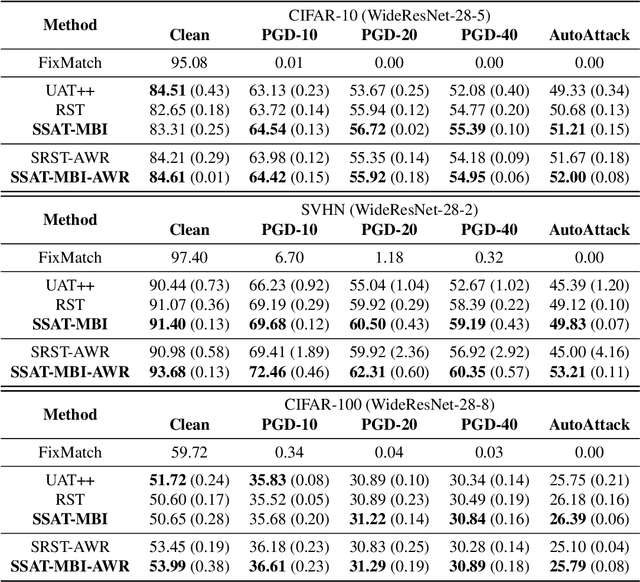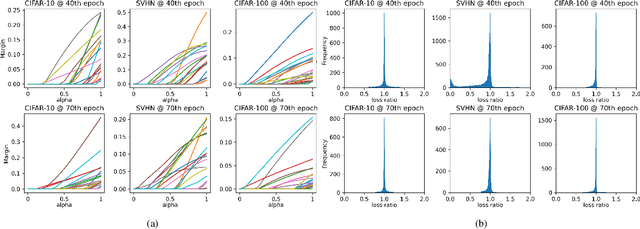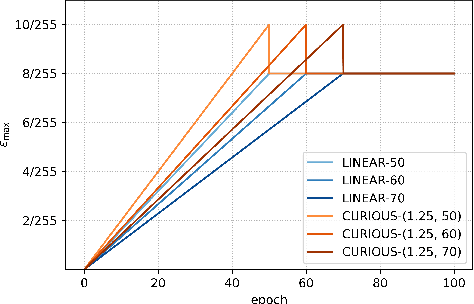Rajgopal Kannan
US Army Research Lab-West
RECIPE-TKG: From Sparse History to Structured Reasoning for LLM-based Temporal Knowledge Graph Completion
May 23, 2025Abstract:Temporal Knowledge Graphs (TKGs) represent dynamic facts as timestamped relations between entities. TKG completion involves forecasting missing or future links, requiring models to reason over time-evolving structure. While LLMs show promise for this task, existing approaches often overemphasize supervised fine-tuning and struggle particularly when historical evidence is limited or missing. We introduce RECIPE-TKG, a lightweight and data-efficient framework designed to improve accuracy and generalization in settings with sparse historical context. It combines (1) rule-based multi-hop retrieval for structurally diverse history, (2) contrastive fine-tuning of lightweight adapters to encode relational semantics, and (3) test-time semantic filtering to iteratively refine generations based on embedding similarity. Experiments on four TKG benchmarks show that RECIPE-TKG outperforms previous LLM-based approaches, achieving up to 30.6\% relative improvement in Hits@10. Moreover, our proposed framework produces more semantically coherent predictions, even for the samples with limited historical context.
Deep Meta Coordination Graphs for Multi-agent Reinforcement Learning
Feb 06, 2025Abstract:This paper presents deep meta coordination graphs (DMCG) for learning cooperative policies in multi-agent reinforcement learning (MARL). Coordination graph formulations encode local interactions and accordingly factorize the joint value function of all agents to improve efficiency in MARL. However, existing approaches rely solely on pairwise relations between agents, which potentially oversimplifies complex multi-agent interactions. DMCG goes beyond these simple direct interactions by also capturing useful higher-order and indirect relationships among agents. It generates novel graph structures accommodating multiple types of interactions and arbitrary lengths of multi-hop connections in coordination graphs to model such interactions. It then employs a graph convolutional network module to learn powerful representations in an end-to-end manner. We demonstrate its effectiveness in multiple coordination problems in MARL where other state-of-the-art methods can suffer from sample inefficiency or fail entirely. All codes can be found here: https://github.com/Nikunj-Gupta/dmcg-marl.
ClusterViG: Efficient Globally Aware Vision GNNs via Image Partitioning
Jan 18, 2025Abstract:Convolutional Neural Networks (CNN) and Vision Transformers (ViT) have dominated the field of Computer Vision (CV). Graph Neural Networks (GNN) have performed remarkably well across diverse domains because they can represent complex relationships via unstructured graphs. However, the applicability of GNNs for visual tasks was unexplored till the introduction of Vision GNNs (ViG). Despite the success of ViGs, their performance is severely bottlenecked due to the expensive $k$-Nearest Neighbors ($k$-NN) based graph construction. Recent works addressing this bottleneck impose constraints on the flexibility of GNNs to build unstructured graphs, undermining their core advantage while introducing additional inefficiencies. To address these issues, in this paper, we propose a novel method called Dynamic Efficient Graph Convolution (DEGC) for designing efficient and globally aware ViGs. DEGC partitions the input image and constructs graphs in parallel for each partition, improving graph construction efficiency. Further, DEGC integrates local intra-graph and global inter-graph feature learning, enabling enhanced global context awareness. Using DEGC as a building block, we propose a novel CNN-GNN architecture, ClusterViG, for CV tasks. Extensive experiments indicate that ClusterViG reduces end-to-end inference latency for vision tasks by up to $5\times$ when compared against a suite of models such as ViG, ViHGNN, PVG, and GreedyViG, with a similar model parameter count. Additionally, ClusterViG reaches state-of-the-art performance on image classification, object detection, and instance segmentation tasks, demonstrating the effectiveness of the proposed globally aware learning strategy. Finally, input partitioning performed by DEGC enables ClusterViG to be trained efficiently on higher-resolution images, underscoring the scalability of our approach.
Towards Ideal Temporal Graph Neural Networks: Evaluations and Conclusions after 10,000 GPU Hours
Dec 28, 2024Abstract:Temporal Graph Neural Networks (TGNNs) have emerged as powerful tools for modeling dynamic interactions across various domains. The design space of TGNNs is notably complex, given the unique challenges in runtime efficiency and scalability raised by the evolving nature of temporal graphs. We contend that many of the existing works on TGNN modeling inadequately explore the design space, leading to suboptimal designs. Viewing TGNN models through a performance-focused lens often obstructs a deeper understanding of the advantages and disadvantages of each technique. Specifically, benchmarking efforts inherently evaluate models in their original designs and implementations, resulting in unclear accuracy comparisons and misleading runtime. To address these shortcomings, we propose a practical comparative evaluation framework that performs a design space search across well-known TGNN modules based on a unified, optimized code implementation. Using our framework, we make the first efforts towards addressing three critical questions in TGNN design, spending over 10,000 GPU hours: (1) investigating the efficiency of TGNN module designs, (2) analyzing how the effectiveness of these modules correlates with dataset patterns, and (3) exploring the interplay between multiple modules. Key outcomes of this directed investigative approach include demonstrating that the most recent neighbor sampling and attention aggregator outperform uniform neighbor sampling and MLP-Mixer aggregator; Assessing static node memory as an effective node memory alternative, and showing that the choice between static or dynamic node memory should be based on the repetition patterns in the dataset. Our in-depth analysis of the interplay between TGNN modules and dataset patterns should provide a deeper insight into TGNN performance along with potential research directions for designing more general and effective TGNNs.
Adversarial Training in Low-Label Regimes with Margin-Based Interpolation
Nov 27, 2024



Abstract:Adversarial training has emerged as an effective approach to train robust neural network models that are resistant to adversarial attacks, even in low-label regimes where labeled data is scarce. In this paper, we introduce a novel semi-supervised adversarial training approach that enhances both robustness and natural accuracy by generating effective adversarial examples. Our method begins by applying linear interpolation between clean and adversarial examples to create interpolated adversarial examples that cross decision boundaries by a controlled margin. This sample-aware strategy tailors adversarial examples to the characteristics of each data point, enabling the model to learn from the most informative perturbations. Additionally, we propose a global epsilon scheduling strategy that progressively adjusts the upper bound of perturbation strengths during training. The combination of these strategies allows the model to develop increasingly complex decision boundaries with better robustness and natural accuracy. Empirical evaluations show that our approach effectively enhances performance against various adversarial attacks, such as PGD and AutoAttack.
Conformal Prediction for Federated Graph Neural Networks with Missing Neighbor Information
Oct 17, 2024Abstract:Graphs play a crucial role in data mining and machine learning, representing real-world objects and interactions. As graph datasets grow, managing large, decentralized subgraphs becomes essential, particularly within federated learning frameworks. These frameworks face significant challenges, including missing neighbor information, which can compromise model reliability in safety-critical settings. Deployment of federated learning models trained in such settings necessitates quantifying the uncertainty of the models. This study extends the applicability of Conformal Prediction (CP), a well-established method for uncertainty quantification, to federated graph learning. We specifically tackle the missing links issue in distributed subgraphs to minimize its adverse effects on CP set sizes. We discuss data dependencies across the distributed subgraphs and establish conditions for CP validity and precise test-time coverage. We introduce a Variational Autoencoder-based approach for reconstructing missing neighbors to mitigate the negative impact of missing data. Empirical evaluations on real-world datasets demonstrate the efficacy of our approach, yielding smaller prediction sets while ensuring coverage guarantees.
Learning Personalized Scoping for Graph Neural Networks under Heterophily
Sep 11, 2024Abstract:Heterophilous graphs, where dissimilar nodes tend to connect, pose a challenge for graph neural networks (GNNs) as their superior performance typically comes from aggregating homophilous information. Increasing the GNN depth can expand the scope (i.e., receptive field), potentially finding homophily from the higher-order neighborhoods. However, uniformly expanding the scope results in subpar performance since real-world graphs often exhibit homophily disparity between nodes. An ideal way is personalized scopes, allowing nodes to have varying scope sizes. Existing methods typically add node-adaptive weights for each hop. Although expressive, they inevitably suffer from severe overfitting. To address this issue, we formalize personalized scoping as a separate scope classification problem that overcomes GNN overfitting in node classification. Specifically, we predict the optimal GNN depth for each node. Our theoretical and empirical analysis suggests that accurately predicting the depth can significantly enhance generalization. We further propose Adaptive Scope (AS), a lightweight MLP-based approach that only participates in GNN inference. AS encodes structural patterns and predicts the depth to select the best model for each node's prediction. Experimental results show that AS is highly flexible with various GNN architectures across a wide range of datasets while significantly improving accuracy.
Studying the Effects of Self-Attention on SAR Automatic Target Recognition
Aug 31, 2024Abstract:Attention mechanisms are critically important in the advancement of synthetic aperture radar (SAR) automatic target recognition (ATR) systems. Traditional SAR ATR models often struggle with the noisy nature of the SAR data, frequently learning from background noise rather than the most relevant image features. Attention mechanisms address this limitation by focusing on crucial image components, such as the shadows and small parts of a vehicle, which are crucial for accurate target classification. By dynamically prioritizing these significant features, attention-based models can efficiently characterize the entire image with a few pixels, thus enhancing recognition performance. This capability allows for the discrimination of targets from background clutter, leading to more practical and robust SAR ATR models. We show that attention modules increase top-1 accuracy, improve input robustness, and are qualitatively more explainable on the MSTAR dataset.
GCV-Turbo: End-to-end Acceleration of GNN-based Computer Vision Tasks on FPGA
Apr 10, 2024Abstract:Graph neural networks (GNNs) have recently empowered various novel computer vision (CV) tasks. In GNN-based CV tasks, a combination of CNN layers and GNN layers or only GNN layers are employed. This paper introduces GCV-Turbo, a domain-specific accelerator on FPGA for end-to-end acceleration of GNN-based CV tasks. GCV-Turbo consists of two key components: (1) a \emph{novel} hardware architecture optimized for the computation kernels in both CNNs and GNNs using the same set of computation resources. (2) a PyTorch-compatible compiler that takes a user-defined model as input, performs end-to-end optimization for the computation graph of a given GNN-based CV task, and produces optimized code for hardware execution. The hardware architecture and the compiler work synergistically to support a variety of GNN-based CV tasks. We implement GCV-Turbo on a state-of-the-art FPGA and evaluate its performance across six representative GNN-based CV tasks with diverse input data modalities (e.g., image, human skeleton, point cloud). Compared with state-of-the-art CPU (GPU) implementations, GCV-Turbo achieves an average latency reduction of $68.4\times$ ($4.1\times$) on these six GNN-based CV tasks. Moreover, GCV-Turbo supports the execution of the standalone CNNs or GNNs, achieving performance comparable to that of state-of-the-art CNN (GNN) accelerators for widely used CNN-only (GNN-only) models.
VTR: An Optimized Vision Transformer for SAR ATR Acceleration on FPGA
Apr 06, 2024Abstract:Synthetic Aperture Radar (SAR) Automatic Target Recognition (ATR) is a key technique used in military applications like remote-sensing image recognition. Vision Transformers (ViTs) are the current state-of-the-art in various computer vision applications, outperforming their CNN counterparts. However, using ViTs for SAR ATR applications is challenging due to (1) standard ViTs require extensive training data to generalize well due to their low locality; the standard SAR datasets, however, have a limited number of labeled training data which reduces the learning capability of ViTs; (2) ViTs have a high parameter count and are computation intensive which makes their deployment on resource-constrained SAR platforms difficult. In this work, we develop a lightweight ViT model that can be trained directly on small datasets without any pre-training by utilizing the Shifted Patch Tokenization (SPT) and Locality Self-Attention (LSA) modules. We directly train this model on SAR datasets which have limited training samples to evaluate its effectiveness for SAR ATR applications. We evaluate our proposed model, that we call VTR (ViT for SAR ATR), on three widely used SAR datasets: MSTAR, SynthWakeSAR, and GBSAR. Further, we propose a novel FPGA accelerator for VTR, in order to enable deployment for real-time SAR ATR applications.
 Add to Chrome
Add to Chrome Add to Firefox
Add to Firefox Add to Edge
Add to Edge